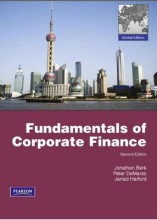The New Keynesian Philips Curve: Expectations and Inflation Policy
3 important questions on The New Keynesian Philips Curve: Expectations and Inflation Policy
The short-run Philips curve shows that:
-> while directly creating jobs may be difficult for a government, the central bank can engage in expansionary monetary policy, increasing the rate of inflation and, via the Philips relationship, achieve a lower rate of unemployment.
People form their expectations about the future in two ways:
- Adaptive expectations: people use data and policy actions from the past. When a new policy is introduced, beliefs do not change quickly, but rather slowly adapt as new data becomes available. One problem is that it provides considerable scope for people to be systematically fooled by policy makers.
- Rational expectations: people are feared looking and know how the world works. It is hard to have much faith in the predications of a theory that is based on people being systematically tricked, so rational expectations are widely assumed in theoretical work. However, models with adaptive expectations perform well empirically.
Three reasons why the inflation target should not be zero:
- Hitting the target at all times is impossible in practice, an inflation target of 0 per cent increases the risk that the economy will experience periods of deflation.
- Some evidence suggests that the conventional measures of inflation tend to overstate the true rate of inflation by about one per cent.
- Some economists believe that a small amount of inflation is necessary to 'grease' our economic engine.
The question on the page originate from the summary of the following study material:
- A unique study and practice tool
- Never study anything twice again
- Get the grades you hope for
- 100% sure, 100% understanding
































